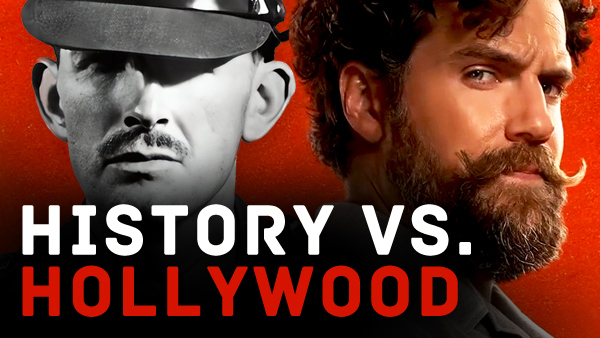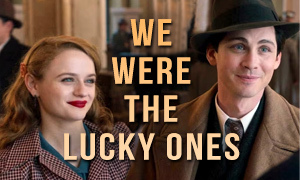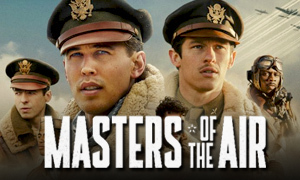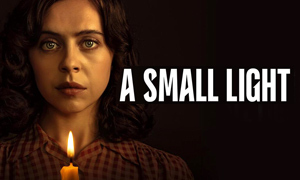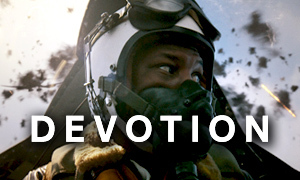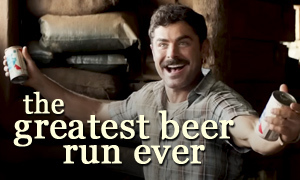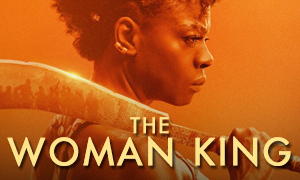Manhattan: History vs. Hollywood
inspired by the Manhattan Project and its evolution at Los Alamos
| REEL FACE: | REAL FACE: |
Daniel London
Born: February 16, 1973 Birthplace: Pittsburgh, Pennsylvania, USA | Robert Oppenheimer
Born: April 22, 1904 Birthplace: New York City, New York, USA Death: February 18, 1967, Princeton, New Jersey, USA (throat cancer) |
Are the Manhattan TV show characters based on real people?
No. The Manhattan TV show true story reveals that despite the show using real history as a backdrop, the main characters are fictional. Occasionally, certain pivotal real-life figures are represented, including theoretical physicist Robert Oppenheimer ("the father of the A-bomb"), portrayed by Daniel London. Oppenheimer was the scientific director of the Manhattan Project.
Why was it called the Manhattan Project?
The United States atomic bomb research and development program was called the Manhattan Project because the program originated under the Manhattan Engineering District of the War Department. -LosAlamosHistory.org
What prompted the United States to begin the Manhattan Project?
The simple answer is World War II. More specifically, the U.S. wanted to build an atomic explosive to counter the evolving threat posed by Germany's nuclear development program. On August 2, 1939, Albert Einstein signed the Einstein-Szilard letter, authored by physicist Leo Szilard (pictured below, right). The letter was addressed to President Franklin D. Roosevelt, advising him to provide funding for research into the possibility of using nuclear fission as a weapon since Nazi Germany may also be conducting similar research.
Why was Los Alamos, New Mexico chosen as one of the primary locations for the top-secret Manhattan Project?
Scientific director Robert Oppenheimer and the military head of the project, Gen. Leslie Groves, were seeking an isolated yet accessible location with a moderate climate, ample water supply and a readily available labor force. Percival C. Keith, who was part of the planning board for the government's Office of Scientific Research and Development, recommended Los Alamos. Keith was the father of two children who attended the Los Alamos Ranch School summer camp and was familiar with the location. Robert Oppenheimer also knew of Los Alamos because he had a ranch in the nearby Sangre de Cristo Mountains. -LosAlamosHistory.org
Did the Manhattan Project's Los Alamos site really only have a single mailing address?
Yes. As mentioned on the TV show, the secret Los Alamos location's only mailing address was a post office box, number 1663, in Santa Fe, New Mexico. Eventually, two more Santa Fe PO Boxes were added, numbers 180 and 1539. On the TV show, one of Abby's letters to her father is screened and returned to her with notes in the margin. For security reasons, screening mail was a regular practice at Los Alamos.
Did they really make the residents take lie detector tests?
Yes. On the Manhattan TV show, we see Abby Isaacs (Rachel Brosnahan) being given a lie detector test shortly after arriving at Los Alamos. The Manhattan TV show true story confirms that lie detection tests were a normal practice administered as part of the security screening. -TheAtlantic.com
Why does Los Alamos resemble a desert on the TV show?
The show was filmed in other locations, including the Bruns Army Hospital near the Santa Fe University of Art and Design. The producers transformed the old hospital buildings into the set. Unfortunately, the location was missing the many pine trees and mountains that encompass the actual Los Alamos, which sits on the Pajarito Plateau. -SantaFeNewMexican.com
Did Los Alamos really suffer water and housing shortages during the war?
Yes. The project officials who initially toured the site felt that the Los Alamos Ranch School buildings would offer adequate housing for the estimated 30 scientists and their families. Little did they know that the population of the town would grow to over 6,000 residents during the war, triggering ongoing shortages of water, housing, supplies, etc., not to mention various other hardships, including apartments that were prone to fire, stoves that smoked and barely worked, and dirt roads that turned to mud after heavy rain. -LosAlamosHistory.org
The second episode of the Manhattan TV show echoes these hardships, as we watch Liza (Olivia Williams) take Abby under her wing and teach her how to get kitchen equipment by trading other items.
Was it really called a "gadget" instead of a bomb?
Yes. The terminology wasn't necessarily used to downplay the significance of what they were building. Instead, the first atomic bomb, known as Trinity, was referred to as a "gadget" to help ensure what was being built would remain a secret.
Did the women of Los Alamos really start to become pregnant at alarming rates?
Yes. Many of the women at Los Alamos started to have babies because there was basically nothing else to do, and the husbands often turned to bedroom activities as a way to take their minds off of work. General Groves instructed that condoms be handed out since the facility was not equipped to support all of the babies being born. This included a lack of schools for the children as they grew. The birth certificates belonging to the babies that were born at Los Alamos during World War II did not list Los Alamos, New Mexico as the place of birth, since technically, the location did not exist. Instead, the birth certificates listed the place of birth as PO Box 1663, Santa Fe, New Mexico. -Manhattan: Beyond the Bomb
Were the scientists really told not to tell their wives and children what they were working on?
Yes. Former Los Alamos resident Ellen Bradbury Reid, whose father was a chemist and an expert on high-explosives, says that "one of the things you never knew at Los Alamos exactly, was what your father did." -Manhattan: Beyond the Bomb
For how long did the scientists and engineers work on the Manhattan Project at Los Alamos?
The TV show begins 766 days before the U.S. drops an atomic bomb on Hiroshima. This coincides with real life, given that scientists and engineers worked at the Los Alamos location for approximately two years, often putting in ten to twelve-hour days six days a week. -LosAlamosHistory.org
Did scientists show symptoms of radiation exposure like on the TV show?
During our research into the Manhattan TV show true story, we discovered that at one point half of the chemists at Los Alamos who handled plutonium, a key component that went into the core of the atomic bomb, had to be pulled from their work after high levels of the chemical appeared in their urine (LATimes.com). During the Manhattan TV show's first episode, scientist Charlie Isaacs (Ashley Zukerman) experiences a nose bleed, a possible sign that he had been exposed to radiation.
Safety was a concern for the Manhattan Project officials, including the largely unknown side effects posed by radioactivity and handling fissile materials, not to mention exposure to a variety of toxic chemicals. However, according to Stafford Warren, medical advisor to the Manhattan Project, "normal industrial [safety] practices were good enough" and health research was subservient to the greater goal of "winning the present war."
Like on the TV show, radiation detectors were used to measure employees clothing, work areas, etc. Nose swabs were also used to detect the inhalation of plutonium dust (AtomicHeritage.org). However, in the end, cancer has not been linked to working on the Manhattan Project. A 1997 study of 26 workers who had handled plutonium found that eight had been diagnosed with some form of cancer, but that number was within the expected range for men of that age (PopularMechanics.com).
Yes. Two fatal accidents occurred at the Los Alamos site while scientists were performing experiments to determine critical mass (referred to as "Tickling the Tail of the Dragon"). The first took place on August 21, 1945 when Los Alamos scientist Harry Daghlian (pictured right) accidentally dropped a tungsten carbide brick, causing the assembly to become critical. Daghlian received an initial blast of neutron radiation and further exposed himself to additional gamma radiation as he disassembled the pile. Daghlian passed away 25 days later at the hospital in Los Alamos from acute radiation poisoning.
Were the scientists at Los Alamos really separated into different groups?
Yes. Like on the TV show, the scientists were separated into groups. It was believed that the resulting competition would drive them to work harder, better and faster. This also led to two entirely different types of atomic bombs being created at Los Alamos. The first was a gun-assembled device, which saw one piece of fissionable material being fired at another piece to produce the chain reaction and an atomic explosion. The atomic bomb detonated over Hiroshima, dubbed "Little Boy", was a gun type device (pictured left, below).
The second type of atomic device was an implosion device, which consisted of a plutonium sphere surrounded by high explosives. The high explosives detonate and compress the material, causing the bomb to go off. The "Fat Man" bomb detonated over Nagasaki was an implosion device (pictured right, below).
Where was Manhattan filmed?
85-90 percent of the Manhattan TV series was filmed at an old New Mexico U.S. Army hospital that was just days away from being torn down when the production stepped in and took over twelve acres of buildings that were modified for the show. The producers wanted an authentic location that didn't feel like a soundstage (Post-Gazette.com). "The set is incredibly accurate," says former Los Alamos resident Julie Fisher, who lived there as a child. "...when I walked in and saw those green [kitchen] cabinets it was like I was right back there as a 4-year-old and here I am, you know, 72. ...it was as if no time had passed (Manhattan: Beyond the Bomb).
Does the site in Los Alamos still exist today?
Yes. Established in 1943 as one of the sites for the Manhattan Project, the laboratory, known then as "Site Y" or "the Hill", is today the Los Alamos National Laboratory. It is the largest employer in northern New Mexico, conducting research in fields such as national security, renewable energy, space exploration, nanotechnology, medicine and supercomputing. The staff includes approximately 9,000 employees. Though nuclear research is still conducted there, when the Cold War came to an end the laboratory shifted its focus toward other fields of research.
Manhattan Project Los Alamos Video and Interviews
Learn more about the true story behind the Manhattan TV show by watching the collection of videos below. Listen to physicist Robert Oppenheimer describe how it felt to watch the first atomic bomb go off, view Hugh Bradner's home movie footage shot at Los Alamos, and observe the end result of the Manhattan Project as Little Boy and Fat Man are exploded over Hiroshima and Nagasaki, respectively.
WATCH Los Alamos Documentary - The Town That Never WasThis short Los Alamos documentary tells
the story of the evolution of the
Manhattan Project at the location from
1942-1945. Footage of the former Los
Alamos Ranch School is shown, in addition
to the top-secret town itself. The film is
from the Bradbury Science Museum. |
WATCH Hiroshima and Nagasaki Atomic Bomb Destruction FootageThis 1946 film Tale of Two Cities
from Army-Navy Screen Magazine
and presented by the War Department is a
pictorial report of the atomic bombs'
destruction in Hiroshima and Nagasaki,
Japan. Footage of each atomic bomb going
off is shown, followed by ground footage
of the aftermath, specifically the
structural damage that spread out from the
"zero point" directly beneath the
explosion. |
WATCH Manhattan TV Show Trailer"Whoever builds it first, that's the end
game. So it has to be us, whatever the
cost," says fictional Manhattan
character Frank Winter (John Benjamin
Hickey) in the Manhattan TV show
trailer. The WGN America drama takes the
real history of the creation of the
world's first atomic bombs via the
Manhattan Project and retells it with
fictional characters. Watch the trailer
for a glimpse at this dramatized
interpretation of history. |
Link-to-Learn More:
- Los Alamos National Laboratory Official Website
- Atomic Heritage Foundation - Preserving the Legacy of the Manhattan Project
- Voices of the Manhattan Project (Interviews with Manhattan Project Veterans and Former Residents)
- Official Manhattan TV Show Website at WGN America
